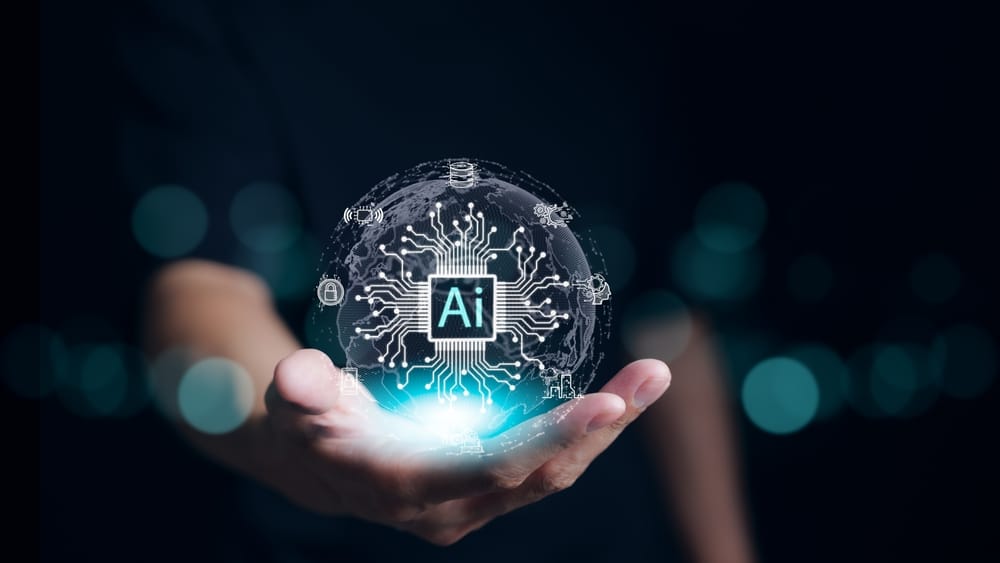
Governments Will Use AI to Track Crypto Crimes – Expert
As AI advances, Gronager predicts that authorities will enhance the tracking of crypto crimes using this innovative technology.
Michael Gronager, the CEO of Chainalysis, recently shared insights on the future of cryptocurrency regulation at the Token2049 conference in Singapore. He believes that governments will employ artificial intelligence within the next five years to monitor blockchain transactions and uncover crypto-related crimes.
Solving Crypto-related Crimes with AI
Gronager stated that using this innovative technology would be far more efficient than relying on many human agents as investigations will be faster and more precise. Gronager explained that AI’s ability to analyze vast amounts of data would enhance the transparency of cryptocurrency, enabling better tracking of illegal activities.
He noted that as blockchain technology continues to develop, it will become a primary tool for law enforcement agencies to solve crimes. The scalability and international reach of crypto make it an ideal option for investigations.
According to Gronager, artificial intelligence could also help identify tax evaders in the crypto space. He pointed out that those who conducted transactions five years ago might escape scrutiny due to the complexities of tax laws at that time.
However, he emphasized that the advancement of tax software and legal guidance will guarantee that ignorance of tax obligations will not be a valid excuse in the future.
Efficient Crime Solving with AI in Crypto
Furthermore, Gronager highlighted the challenges posed by privacy-focused cryptocurrencies, such as Monero (XMR). These privacy tokens make it difficult for these innovative tech systems to track transactions, complicating efforts to detect criminal behaviour.
Despite the rising concerns about crypto crime, Gronager noted that transactions involving privacy coins remain less than 1% of all crypto activities. A Chainalysis report indicated that since 2019, nearly $100 billion has moved from known illicit wallets to various exchanges.
Gronager’s remarks suggest a future where artificial intelligence will play a central role in ensuring compliance within the crypto industry. As government agencies embrace these technologies, the crypto sector’s oversight landscape could change significantly.
The rise of artificial intelligence-driven investigations could lead to stricter enforcement of laws surrounding cryptocurrencies, making it crucial for users to understand their legal responsibilities. The evolution of these technologies signals a shift in how authorities interact with the cryptocurrency market, pushing the boundaries of what is considered possible in financial regulation.
ASI Alliance Expands to Rival OpenAI’s Market Dominance
Meanwhile, the Artificial Superintelligence (ASI) Alliance, an industry partnership challenging major artificial intelligence players like OpenAI, is working on expanding its computational power to close the gap with leading firms. While it’s far from matching the computing resources of its larger rivals, ASI is strategically positioned to offer decentralized solutions, according to SingularityNET CEO Ben Goertzel.
Accordingly, the ASI Alliance took a step towards boosting its capacity by opening a vote on whether to bring the cloud computing and blockchain platform Cudos into the alliance. If approved, this merger will enable the ASI Alliance to increase its computing power and access enhanced artificial intelligence tools.
The vote, which will remain open until September 24, also allows the community to decide whether Cudos’ native token, CUDOS, should be incorporated into the ASI Alliance’s shared ecosystem. Notably, SingularityNET, Ocean Protocol, and Fetch.ai are already part of the ASI Alliance.
Decentralized Solutions Key to ASI Alliance’s AI Strategy
By incorporating Cudos, the ASI Alliance aims to meet its growing computing demands as it moves toward deploying artificial general intelligence (AGI). With the potential merger, the alliance could leverage up to $200 million in dedicated computer hardware, as estimated by Ben Goertzel.
However, this is still a fraction of what OpenAI reportedly uses to power GPT-4, with an estimated $1 billion in computing power. Goertzel acknowledges that the ASI Alliance is far behind OpenAI and Google in terms of hardware capacity but emphasizes the alliance’s potential to compete favorably through decentralized solutions.
A critical component of this strategy is Cudos’ NuNet, which allows devices worldwide to contribute to a global pool of computing power. This strategy could enable the ASI Alliance to pull resources from various locations and merge them into its decentralized network to enhance its scalability.
By using innovative approaches like OpenCog Hyperon and combining them with decentralized networks, Goertzel envisions a future where decentralized AI systems could become widely adopted, similar to how ChatGPT became popular. Goertzel also pointed out that the ASI Alliance’s shared token model creates a unified system that allows smaller projects to thrive while avoiding the complexities typically seen in corporate mergers.
Take your trading to the next level with Finance Phantom Bot’s intelligent insights and automated strategies.




